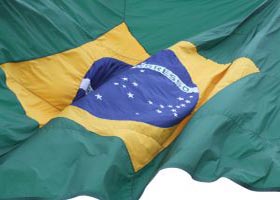
 Canadian investors are certainly familiar with Brazil. Brookfield Asset Management, one of the globe’s most prominent infrastructure players, ultimately descends from the old Brascan conglomerate – which started as Brazilian Traction, Light and Power a century ago. Meanwhile, Brazil’s Vale, one of the world’s leading mining companies, took over Canadian icon Inco in 2006. What goes around comes around.
Canadian investors are certainly familiar with Brazil. Brookfield Asset Management, one of the globe’s most prominent infrastructure players, ultimately descends from the old Brascan conglomerate – which started as Brazilian Traction, Light and Power a century ago. Meanwhile, Brazil’s Vale, one of the world’s leading mining companies, took over Canadian icon Inco in 2006. What goes around comes around.
Is the Vale purchase a one-off demonstration of emerging market clout? Perhaps not. Petrobras recently floated a secondary offering worth USD$70 billion, making it the third-largest oil company in the world.
But there’s more to Brazil than Vale and Petrobras argues Steve Jacobs.
“One of the issues that international investors have with investing in Brazil — as do local investors– is that the index is distorted by commodity-biased companies and by large companies such as Petrobras and Vale. So it does distort the market and as recently as three years ago, we developed absolute return equities products, which would be moving away using the Bovespa as an index for exactly that reason. We’re not alone in doing that.”
Jacobs is managing director and CEO of the asset management arm of BTG-Pactual. He works out of London, directing institutional investors towards Brazil. That itself is a short story in changing global fortunes. He was with UBS in 2006, when UBS bought out Pactual. That was at the buoyant height of global investment banks. Faced with capital-raising needs, UBS retrenched, selling its Brazilian division to BTG – a firm owned by Pactual’s founder. Now Jacobs is back where he was, in part because of flighty international investors.
“In 2005 and 2006, some of the big international houses were stepping up in Brazil and Latin America, making big foot steps in putting people on the ground,” he recalls. “2007 happened and a complete retrench. … All those guys raced back to base: cut heads, cut costs, cut investments because the rest of the portfolio was going down the drain.”
It turns out that Brazil was more resilient than expected says Persio Arida, a managing partner and one of the founders of BTG Pactual: “With the Lehman event, there was a general risk aversion and foreigners just left Brazil so they sold shares, they sold bonds and they traded massively.”
Brazil’s currency, the real, took a hit, but “Brazil reacted as you would expect: it lowered interest rates domestically,” says Arida, a former president of Brazil’s central bank and now chairman of BTG-Pactual’s asset management business. “Of course, Brazil used external reserves to smooth the process. The Treasurer gave reserves to commercial banks when the credit lines were cut by the foreign banks. Brazil intervened very aggressively in the exchange markets to prevent the exchange rate from skyrocketing and Brazil had, not exactly quantitative easing, but a credit ease.”
While Brazil’s central bank used a more limited repertoire of instruments than the U.S. did, it got better results, Arida adds. “Brazil was as fast as China in picking up again, because people realized that there’s no reason for Brazil to be here because the financial system was quite safe, Brazilian companies were not leveraged, we had no equivalent to the housing bubble here in Brazil. So when prices dropped, people started buying again. And the foreigners realized this very fast — the velocity of the recovery in industrial production in Brazil, the stock exchange, etc. was much faster than in the central economies. So Brazil was saved from contagion — but markets collapsed faster here than in other countries, as you would expect.”
That collapse took little notice of hard-won achievements. Arida recounts three elements that have contributed to Brazil’s “stabilization.” The first was currency reform in 1994. With the introduction of the real, inflation dropped from 30% a month to 4% to 5% a year. The second was the election of outgoing president Luiz Inácio Lula da Silva in 2002. Though he ran on a populist program and “there was a general fear in markets that Brazil would follow an Argentina,” he didn’t. And now, in the lead up to the current presidential election, no one is contesting the basic elements of stabilization, Arida notes.
“The incumbent is going to change policies, the opposition is going to change policies but no one expects the basics to be changed. The basics means the approach will be friendly to foreign capital, floating exchange rates, inflation targeting.”
Which bodes well for an investor willing to take a chance on a country that is foreign but somehow familiar, suggests Jacobs.
“The Brazil market and the drivers in the market – only 15% to 20% of GDP is export driven,” he notes. That’s less than the GDP share of exports in Canada. “The rest is driven by this 200 million population growing, moving up the social classes through largely some of the policies that Persio mentioned,” he adds.
How familiar is that foreign country? Perhaps there’s a better analogy than Canada. Just look south.
“Now in the years since Lula came to power – so in eight years – credit has tripled but it’s still only 40% of GDP, compared to 210% in the U.S. or 195% in the U.K,” Jacobs explains. “But people can buy cars with credit, houses with mortgages etc. … So the exports are really just complementary to all of that. I think the real Brazil story is an internal growth story, which is why a lot people use the analogy of 1950s U.S.”
